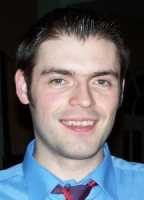21 Nov New Online Fertility Calculators Predict Chance of IVF Success
MedicalResearch.com Interview with:
David McLernon PhD MPhil BSc
Research Fellow in Medical Statistics
Medical Statistics Team
Institute of Applied Health Sciences
University of Aberdeen
Foresterhill Aberdeen
MedicalResearch.com: What is the background for this study?
Response: Normally when a couple attend a fertility clinic to begin IVF treatment they are only informed about their chances of having a baby for the first attempt of IVF. In actual fact the first treatment is often unsuccessful and many couples will go on to have several complete cycles of the treatment– each involving the transfer of one or two fresh embryos potentially followed by one or more frozen embryo transfers. We felt that a prediction model that could calculate the chances of having a baby over the complete package of treatment would provide better information for couples.
MedicalResearch.com: What are the main findings?
Response: We developed two novel online fertility calculators using large-scale data sources from the UK. The first one uses couple information available before they start IVF, such as the age of the woman and the cause of their fertility problem, to predict their overall chance of having their first IVF baby over an entire package of IVF treatment.
The second calculator updates these predictions using information available at the first treatment attempt, such as the number of eggs that were collected and the number of embryos that were transferred.
For the first calculator we found that age of the woman was by far the best predictor of live birth. From the age of 30 the chances start to decline. After the first transfer of a fresh embryo, the number of eggs collected and the freezing of spare embryos were just as important as the age of the woman. The more eggs collected (up until the number reaches around 13 when it starts to level off) the higher the chances of success.
MedicalResearch.com: What should readers take away from your report?
Response: These new calculators will help shape couples’ expectations and will help them prepare emotionally and financially for their IVF journey. They will be better informed for the difficult decision of starting or refusing an IVF program.
MedicalResearch.com: What recommendations do you have for future research as a result of this study?
Response: Our calculators should be used cautiously to make decisions around whether or not couples should have IVF treatment from places like ivf brisbane. This is because the models have been developed using information from couples who have already decided to start IVF treatment. The next stage is to develop a prediction model that can estimate the chances of having a baby with or without fertility treatment over time. This will better support decisions around when a couple should start IVF.
MedicalResearch.com: Is there anything else you would like to add?
Response: The calculators are accessible online here: https://w3.abdn.ac.uk/clsm/opis and we are in the process of developing an app. We anticipate that physicians will use them as they are user-friendly and ask the relevant questions. We also propose to monitor the use and impact of the calculators.
MedicalResearch.com: Thank you for your contribution to the MedicalResearch.com community.
Citation:
Predicting the chances of a live birth after one or more complete cycles of in vitro fertilisation: population based study of linked cycle data from 113873 women
BMJ 2016; 355 doi: http://dx.doi.org/10.1136/bmj.i5735 (Published 16 November 2016)Cite this as: BMJ 2016;355:i5735
Note: Content is Not intended as medical advice. Please consult your health care provider regarding your specific medical condition and questions.
More Medical Research Interviews on MedicalResearch.com
[wysija_form id=”5″]
Last Updated on November 21, 2016 by Marie Benz MD FAAD

